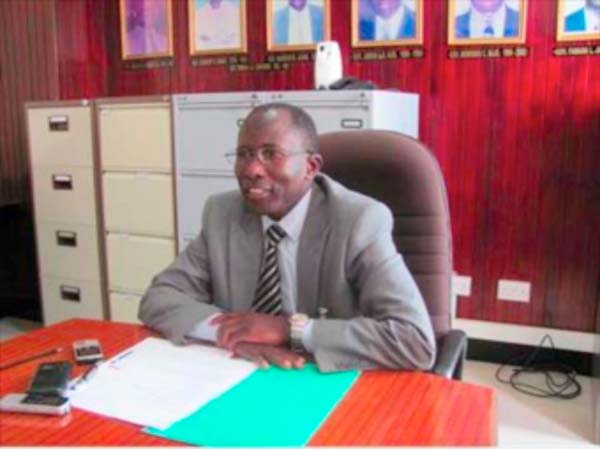
Global Economic Developments
Since the last MPC meeting, the recovery in the global economy has remained weak and uneven across countries, with the risks now tilted towards emerging market economies. According to the International Monetary Fund (IMF), global output is estimated at 3.1 percent in 2015, lower than the 3.4 percent in 2014.
Growth in the advanced economies is estimated to have expanded from 1.8 percent in 2014 to 1.9 percent in 2015. Growth remains robust in the United States aided by easing financing conditions and strengthening housing and labour markets. In the Euro area, growth is projected at 1.5 percent, higher than the 0.9 percent in 2014 underpinned by accommodative monetary policy and low oil prices.
Growth in emerging markets and developing countries is estimated to have decelerated from 4.6 percent in 2014 to 4.0 percent in 2015-the lowest since 2009. China’s economy continues its shift to a sustainable growth path with greater reliance on market forces. Consequently, growth in China is expected to slow gradually from 7.0 percent in 2014 to 6.9 percent in 2015. Output is expected to decline further to 6.3 percent in 2016. As the process of rebalancing from manufacturing toward the services sector proceeds, industrial output should decelerate whilst services and consumption should remain solid.
Growth in sub-Saharan Africa is estimated to have slowed to 3.5 percent in 2015 from 5.0 percent in 2014, reflecting in the main the impact of lower commodity prices and higher borrowing costs which weighed heavily on some of the region’s largest economies as well as a number of smaller commodity exporters.
The Domestic Economy
Real GDP
The Gambia Bureau of Statistics has revised upwards real GDP growth for 2014 from the earlier estimate of 0.5 percent to 0.9 percent, citing less-than-expected contraction in agricultural output than previously estimated. Growth in 2015 is expected to be supported by strong recovery in tourism and agriculture as well as increased infrastructure spending.
Money and Banking Sector Developments
Growth in the monetary aggregates decelerated in 2015. Broad money (M2) contracted by 0.9 percent in 2015 compared to the growth of 11.2 percent in 2014. This was primarily the result of the contraction in the net foreign assets (NFA) of the banking sector.In contrast, the net domestic assets (NDA) of the banking sector rose by 13.9 percent compared to 14.2 percent a year earlier. Reserve money grew at an annual rate of 10.0 percent, lower than the 11.9 percent a year ago, owing to the marked contraction in the NFA of the Central Bank.
The key financial soundness indicators show that the fundamentals of the banking industry remain strong.The industry risk-weighted capital adequacy ratio averaged 32.6 percent in 2015, higher than the required minimum of 10.0 percent.
Total assets of the industry increased to D29.3 billion, or 3.8 percent from 2014. Gross loans and advances, accounting for16.7 percent of total assets, decreased to D4.91 billion, or 9.4percent from 2014 attributed mainly to 8.5 percent contraction in private sector credit.The ratio of non-performing loans to gross loans rose from 7.2 percent in 2014 to 9.2 percent in 2015.
Deposit liabilities totaled D16.5 billion, a decrease of 1.9 percent from 2014. The liquidity ratio averaged 93.0 percent, higher than the statutory minimum requirement of 30.0 percent.
The industry recorded a net profit of D604.0 million, but lower than D624 million in 2014. The return on assets was 2.1 percent and the return on equity (13.5 percent) compared to 2.2 percent and 15.9 percent respectively in 2014.
In the year to end-December 2015, the domestic debt stood at D22.6 billion (59.1 percent of GDP) from D18.8 billion (53.0 percent of GDP) in 2014. Treasury bills and Sukuk Al Salaam, accounting for 67.7 percent and 2.63 percent of the debt stock, increased by 4.3 percent and 0.02 percent respectively.
Yields on all Government securities increased during 2015. The yield on the 91-day, 182-day and 364-day Treasury bills increased to 17.65 percent, 18.08 percent and 21.77 percent in December 2015 from 14.0 percent, 16.34 percent and 19.75 percent respectively in December, 2014. Similarly, the yield on the 91-day, 182-day and 364-day SAS rose from 14.07 percent, 16.50 percent and 19.20 percent in 2014 to 17.58 percent, 18.03 percent and 21.83 percent in 2015 respectively.
Government Fiscal Operations
Data on government fiscal operations indicated that revenue and grants amounted to D8.0 billion (21.0 percent of GDP) in 2015 compared to D7.5 billion (20.0 percent of GDP) in 2014.
Total expenditure and net lending amounted to D10.4 billion (28.3 percent of GDP) compared to D9.8 billion (26.3 percent of GDP) in 2014. Current expenditure rose to D8.4 billion or 15.5 percent higher than in 2014, largely attributed to the sharp increase in interest payments by 47.7 percent to D2.8 billion (30.4 percent of tax revenue).
The overall budget balance (excluding grants) on commitment basis was a lower deficit of D2.8 billion (7.6 percent of GDP) in 2015 compared to a deficit of D3.6 billion (9.7 percent of GDP) in 2014. The overall budget balance (including grants) on commitment basis was unchanged at D2.4 billion, or 6.3 percent of GDP.
External Sector Developments
Preliminary balance of payments estimates for 2015 indicated an overall surplus of US$62.1 million compared to US$112.9 million in 2014.
The current account deficit widened to US$115.2 million compared to the deficit of US$81.8 million in 2014. Of the components of the current account, the goods account recorded a deficit of US$250.3 million, higher than the deficit of US$217.8 million last year. The services account surplus decreased slightly to US$37.2 million from US$41.7 million in 2014.
The capital and financial account recorded a surplus of US$177.3 million, lower than the surplus of US$194.7 million in 2014.
As at end-December 2015, gross international reserves amounted to US$76.0 million, equivalent to 2.5 months of import cover, lower than the US$111.6 million, or 4.5 months of import cover in December 2014.
Volume of transactions in the domestic foreign exchange market decreased to US$0.75 billion in 2015 compared to US$1.42 billion in 2014. In the year to end-December 2015, the Dalasi appreciated against the U.S. Dollar by 12.2 percent, Pound Sterling (12.6 percent) and Euro (23.0 percent).
Inflation Outlook
Consumer price inflation, measured by the National Consumer Price Index (NCPI), decelerated to 6.7 percent in December 2015, from 6.9 percent in December 2014. This was primarily as a result of the decline in food inflation from 8.43 percent in December 2014 to 4.83 percent in December 2015. In contrast, non-food inflation increased from 4.8 percent in December 2014 to 5.17 percent in December 2015. Central Bank of The Gambia’s measure of core inflation, which excludes the prices of volatile food items, utilities and energy, decreased to 6.7 percent in December 2015 compared to 6.9 percent in December 2014.
Global inflation pressures remain benign, reinforced by further decline in commodity prices. Since the previous meeting of the MPC, oil prices have declined by about 75 percent from their peak in June 2014. The global over-supply and the consequent low prices are expected to persist in the medium-term, particularly following the lifting of sanctions against Iran.
The FAO Food Price Index averaged 164.1 points in 2015, nearly 19 percent lower than 2014, marking the fourth consecutive annual decline. Abundant supplies in the face of a slowing world economy depressed demand for food commodities.
These developments, coupled with the recent reduction in petroleum prices as well as the increase in agricultural output should provide the impetus for disinflation. However, to create the conditions for long-term sustainable growth and to attain the inflation target of 5 percent, fiscal adjustment is absolutely essential to support the monetary policy stance.
Against this backdrop, the Committee assesses the risks to inflation to be on the downside and, therefore, decided to maintain the policy rate at 23 percent. The Committee remains committed to its price stability mandate and would continue to monitor developments in the economy and take appropriate actions if necessary.
Read Other Articles In Article (Archive)

Barrow assures Foni no one can separate them from rest of Gambia
Dec 4, 2019, 2:54 PM
Dr. Njogu Bah’s trial continues
Mar 20, 2014, 9:45 AM



